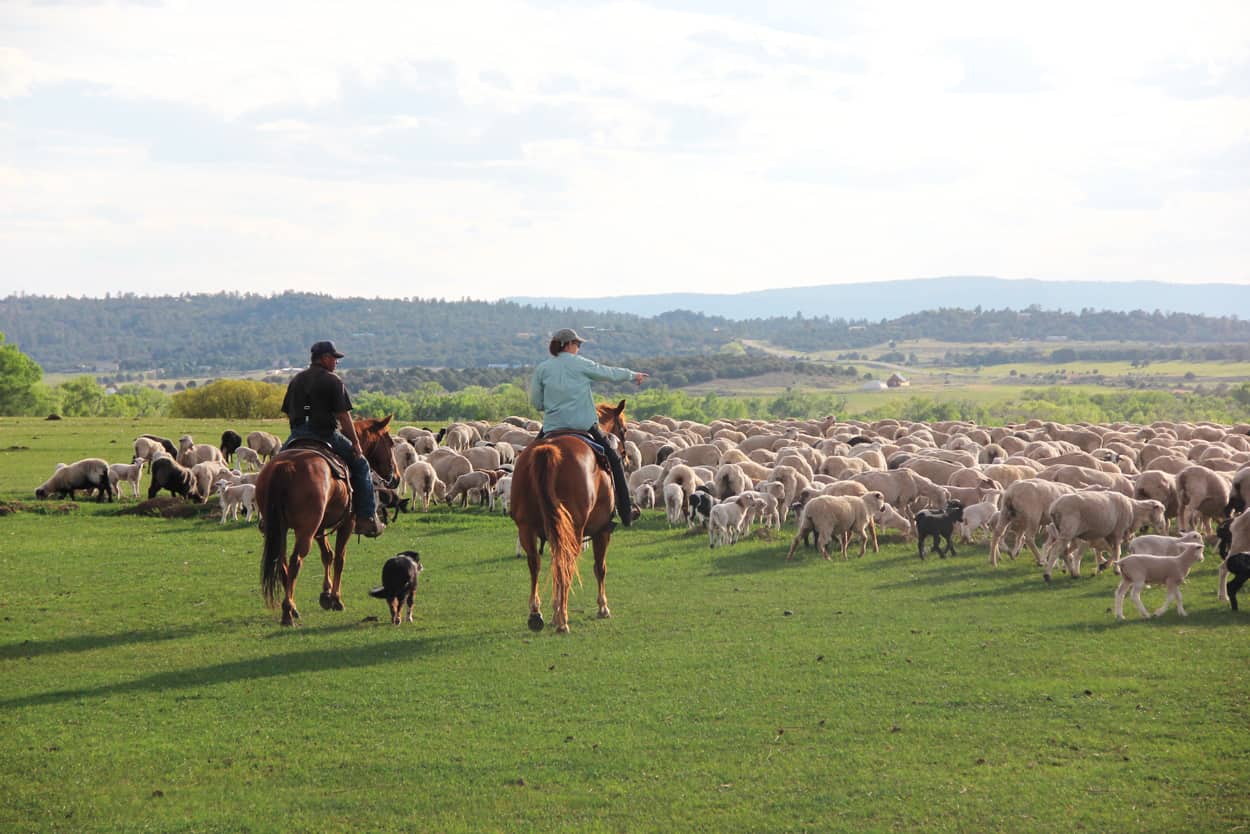In Conversation with Jami Porter Lara
By Briana Olson

Artist Jami Porter Lara has a history in the kitchen; she started baking to entertain herself as a girl in the East Mountains of Albuquerque and once spent nine months working as a pastry chef for Jennifer James. But when she decided to whip up a batch of cookies for her fellow art students at the University of New Mexico, she wasn’t performing the motherly role of the older female student who showers her peers with sweets. For a week, Porter Lara had been recording her implicit biases, the myriad micro-judgements of others that ran through her mind as she moved through UNM’s campus. They were not her beliefs, she says, but they were part of her thought process—a cultural inheritance passed down not just at the macro level but also through her family. Recording the biases was first a way of seeing them. Then she cut them up and baked them into her cookies, presenting the treats to her peers with a recipe card marked with the wear and tear of loving re-use. Instead of all-purpose white flour, the ingredient list included two cups all-purpose white fear—a reference both to the implicit biases she’d mixed into the batter and to the racial connotations pervasive in early twentieth-century marketing campaigns for industrially processed white foods.
“You are what you eat,” the maxim goes, and not everyone would eat the cookies. As Porter Lara and I talk about her conceptual explorations of white fear as an ingredient (and product) of the home, I recall the film Like Water for Chocolate, and draw a parallel to the notion that a cook’s feelings can infect whoever dines on their food. Porter Lara nods, but it’s clear that her work is less concerned with the magical or accidental transmission of emotions than a much more deliberate transmission of ideology. “You are what you make” might be a more fitting maxim—one that suggests a worldview is digested not with the aid of acids and enzymes, nor with the heart, but through the steadfast repetition known, in cooking as in art, as practice.
A fine layer of dust covers much of Porter Lara’s studio—traces of the practice behind another body of work, a ceramic installation currently on view at Gerald Peters Contemporary in Santa Fe—and she’s already warned me not to touch anything. On the wall facing us, a white neon sign flashes on and off, alternately illuminated as “whiteness” and “witness.” Paired, the words encapsulate an aim central to the artist’s accumulating body of work on this subject: “Witness whiteness.”
The sign was conceived in response to the 2016 presidential election, which Porter Lara (like many people of color) immediately believed was about “the preservation of whiteness.” It was also conceived as a self-provocation. Her father is a second-generation Mexican-American, and her maternal grandmother was a first-generation German-American who grew up in Detroit. Baking and cooking—“that’s a big part of my identity,” Porter Lara says, “and I owe that to my grandmother. But she also wanted to teach me to be afraid of black people.” In other words, Porter Lara has what she calls “a complicated relationship with whiteness.”
“I pass,” Porter Lara says, with full awareness of the privilege that being taken for white entails. But she also takes it personally when the president characterizes Mexicans as rapists and murderers. And she questions white people who claim innocence and surprise. “If we’re going to deal with whiteness,” she asserts, “we have to confront our history.”
A month or so before visiting Porter Lara, I came across an essay on the Joy of Cooking in Electric Literature. Perhaps not surprisingly, it was a nostalgic piece of writing, one celebrating the cookbook’s author, Irma S. Rombauer, for her ingenuity and quirks, lauding her family for carrying on the tradition after she died, and speaking, above all, to the ubiquity and inter-generational popularity of the iconic cookbook. I have that in mind, along with a copy of The Settlement Cookbook inherited from my own grandmother, when Porter Lara and I sit down at her kitchen table to continue our conversation. On the cover page of The Settlement Cookbook is a photograph of a stout, grey-haired German woman who looks as fluent in expressing dissatisfaction as my own grandmother was, and there’s no doubt that I’ve imbued the pages with fond, if complicated, memories of the woman who instructed me in, among other things, the art of finely chopping nuts. But I never saw my grandmother use that book—she relied, often, on recipe cards—and the cookbook Porter Lara remembers learning from is the Betty Crocker Cookbook.
“Do you remember the pictures?” Porter Lara asks, laughing. I do, although I have to navigate my own set of associations with Betty Crocker first. The pictures illustrate an idealized white femininity that is also common to advertisements for the fabric used to make the flour sack dresses from which Porter Lara drew inspiration for her own set of flour sack dresses.

In 2018, Porter Lara redesigned a vintage flour label, printed it onto muslin, and sewed (she had to learn how first) four fine dresses that hang, at the moment, from a rack on her back porch. As in the cookie recipe, “all-purpose white flour” has been replaced with “all-purpose white fear.” On the baby dress, “white fear” hides beneath the ruffle at the collar. On the shift dress, styled to be reminiscent of the 1950s and fit for a teenager or young mother, the words are brazen, fully visible across the front along with the deceptively innocent “Milled from American Wheat.” There’s also a princess-style girl’s dress—not a common design in the early twentieth century, when flour sack dresses were popular. Porter Lara explains the intention behind this anachronism: there’s a risk of nostalgia enabling people not to see what’s there, or not to see how it’s speaking to them. And, in fact, on one occasion when the dresses were exhibited, a visitor approached the artist with tears in her eyes, saying the dresses reminded her of her grandmother.
“Mothers’ transmission of values looks like care,” Porter Lara observes. “It’s like clothing.” She pulls up an image of a woman in a gingham dress that (if not for the text in the ad) I never would have guessed was made from a recycled flour sack. In another, a mother and daughter wear white gloves with their matching prints. These women wear effortless smiles, Barbie-doll figures, impeccable make-up and hairstyles. In a handful of photos repeated on various throwback-themed blogs and websites, five or more girls are rowed up, all wearing dresses sewn from repurposed flour and feed sacks. While this tradition speaks to the long-lost thriftiness of the era, it’s a naïve view that sees only thrift; flour and feed companies advertised their designs, and the quality of their cotton, in order to boost sales (and the cotton industry).
“How did white supremacy get perpetuated?” Porter Lara asks, answering with a list of roles played by women: control of movement, policing behavior, deciding who you could be friends with. A lot of it, she says again, is under the guise of caring. In early twentieth-century marketing for industrial foods like white flour, companies “capitalized on anxieties that stereotyped immigrants as unhygienic” by proclaiming the products “pure,” “all-natural,” and “superior,” she says. In the following decades, Porter Lara says, referring to Elizabeth Gillespie McRae’s book Mothers of Massive Resistance, women “were the foot soldiers in the fight to preserve segregation.” The stories I hear white people broadcast are the ones about white women—family members, friends, objects of admiration—who traveled to Birmingham to bravely stand up for integration, or who defied social norms and maternal warnings (see Hairspray) to befriend a black girl or kiss a black boy, but the fact is that many white women worked diligently to preserve segregation. As one example, Porter Lara cites community textbook revisions undertaken during the battle for integration. Thanks to concerned mothers, history was revised to erase evidence of black resistance to slavery, to present a benevolent version of the antebellum era.
In 2018, while in residence at Tamarind Institute, Porter Lara created a set of lithographs to be hung in the manner of family photographs, all together in some cherished, homey space, “supposedly innocent of ideology.” Phrases like “they mean well” and “she’s a good person” are printed in white on a white background, with letters often split mid-syllable to compound the difficulty in simply reading the text. There’s an inclination, Porter Lara says, to see people as “of their time,” but she’s aware that even in her grandmother’s time there were justice-minded white people. Her work on whiteness is, in part, a reckoning with the fact that her grandmother wasn’t one of them.

nd stacked like flood bags. She plans to depict the domestic sphere as a site of both offense and defense, to challenge the claims to moral authority that women have invoked not only to work their way into the public sphere but to perpetuate white supremacy and dominance. In March, she travels to Oaxaca for a needlework residency. “I want to make this thing I call the states rights ‘couch,’” she explains, through which she will explore how arguments in the 1960s were “couched” in parental rights, in states’ rights, so that women could engage in a very deliberate, very political transmission of white dominance without ever speaking of race.
“There’s a lot of power in mothering,” Porter Lara says. Her twist on the more familiar analysis of gender norms reminds me, later, of an essay that impressed me as a young feminist. The author, Scott Russell Sanders, had grown up working-class and did not recognize masculinity as most feminists presented it—powerful, influential, with its hands on the levers that move capital and people. For him, masculinity was backbreaking, crippling, a lifetime of crushing labor and disease from which women, if nothing else, were protected. There’s a temptation—and I can hear this counterargument form in the background noise of my mind even as Porter Lara and I talk about her work—to make a similar point about white people. Not all whites were equal, the argument goes. Some struggled; many still do.
In one of the vintage photos Porter Lara shows me, a line of white girls wear dingy flour sack dresses in a dusty, Depression-era yard. Is that privilege, the white defense wants to ask? What is whiteness, anyway?
“American whiteness,” Porter Lara says when I pose that question, “has to be defined as created in opposition to blackness.” The law, she goes on, distinguished between indentured servants, often of European origin, and enslaved African peoples—a way for a group of people to maintain power over another group of people. “Whiteness is certainly adaptable,” she says. “It’s easy to look at the KKK and the alt-right as the real racists, but I don’t think that’s how it works.”
Some might argue, I tell Porter Lara, that slogans like “pure” and “all natural” are innocuous, even invisible. I asked her what she would say to the contention that language can be transparent, without real impact.
“Isn’t that the power of whiteness?” she asks. “Whiteness isn’t visible to white people.”
To grapple with white privilege does not require forgetting that (some) white people have endured hardship. It doesn’t require flatly villainizing one’s grandparents. But it does—like engaging with Porter Lara’s work—require confronting some unsavory truths. It demands letting go of some of white America’s collective nostalgia for the hardscrabble existence of white settlers, for the rosy-eyed remembrance of the labor endured by (some) white women—perhaps our own grandmothers—who grew up before the microwave, and who counseled their daughters against befriending black girls.
“To change the future,” Porter Lara affirms, “we have to let go of allegiance to our past selves.”
Edible celebrates New Mexico's food culture, season by season. We believe that knowing where our food comes from is a powerful thing. With our high-quality, aesthetically pleasing and informative publication, we inspire readers to support and celebrate the growers, producers, chefs, beverage and food artisans, and other food professionals in our community.












